Most reactive towards nitration reaction (Substitu- tion electrophilic aromatic)

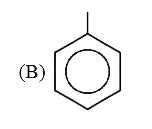

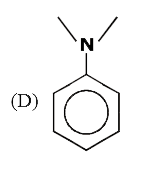
The correct Answer is:D
To determine which compound is the most reactive towards nitration (an electrophilic aromatic substitution reaction), we need to analyze the electron density on the aromatic ring of each compound. The more electron-rich the aromatic ring, the more reactive it will be towards electrophiles such as the nitronium ion (NO2+).
1. Identify the Compounds: The compounds given are:
- Aniline (C6H5NH2)
- Toluene (C6H5CH3)
- Vinyl aniline (C6H5NH=CH2)
- N,N-Dimethylaniline (C6H5N(CH3)2)
2. Analyze Electron Donating/Withdrawing Effects:
- Aniline: The amino group (-NH2) has a lone pair of electrons that can donate electron density to the aromatic ring through resonance (+R effect). This increases the electron density on the ring, making it more reactive towards electrophiles.
- Toluene: The methyl group (-CH3) exhibits a +I (inductive) effect, which also increases the electron density on the ring, but to a lesser extent than the +R effect of the amino group.
- Vinyl aniline: The nitrogen in the vinyl aniline has a lone pair, but the presence of the double bond (C=C) adjacent to it can act as an electron-withdrawing group due to its resonance effect, making this compound a weaker activator compared to aniline.
- N,N-Dimethylaniline: This compound has two methyl groups that provide a +I effect and the nitrogen's lone pair that can participate in resonance (+R effect). The combination of these effects significantly increases the electron density on the aromatic ring.
3. Compare the Electron Density:
- Aniline has a strong +R effect due to the amino group.
- Toluene has a moderate +I effect due to the methyl group.
- Vinyl aniline has a weaker activating effect due to the electron-withdrawing nature of the adjacent double bond.
- N,N-Dimethylaniline has the highest electron density on the ring due to both the +I effects of two methyl groups and the +R effect of the nitrogen's lone pair.
4. Conclusion: Since N,N-Dimethylaniline has the highest electron density on the aromatic ring, it will be the most reactive towards electrophilic aromatic substitution (nitration). Therefore, the answer is:
Most reactive towards nitration: N,N-Dimethylaniline (Option 4)
- Aniline (C6H5NH2)
- Toluene (C6H5CH3)
- Vinyl aniline (C6H5NH=CH2)
- N,N-Dimethylaniline (C6H5N(CH3)2)
- Aniline: The amino group (-NH2) has a lone pair of electrons that can donate electron density to the aromatic ring through resonance (+R effect). This increases the electron density on the ring, making it more reactive towards electrophiles.
- Toluene: The methyl group (-CH3) exhibits a +I (inductive) effect, which also increases the electron density on the ring, but to a lesser extent than the +R effect of the amino group.
- Aniline has a strong +R effect due to the amino group.
- Toluene has a moderate +I effect due to the methyl group.
- Vinyl aniline has a weaker activating effect due to the electron-withdrawing nature of the adjacent double bond.
- N,N-Dimethylaniline has the highest electron density on the ring due to both the +I effects of two methyl groups and the +R effect of the nitrogen's lone pair.
Topper's Solved these Questions
- BOOK - MOTIONCHAPTER - AROMATIC COMPOUNDEXERCISE - Exercise - 2 (Level-I)47videos
AROMATIC COMPOUND
- BOOK - MOTIONCHAPTER - AROMATIC COMPOUNDEXERCISE - Exercise - 2 (Level-II)29videos
AROMATIC COMPOUND
- BOOK - MOTIONCHAPTER - ALKYI HALIDEEXERCISE - Exercise - 4 | Level-II8videos
ALKYI HALIDE
- BOOK - MOTIONCHAPTER - ATOMIC STRUCTURE EXERCISE - EXERCISE-4 (LEVEL-II)18videos
ATOMIC STRUCTURE
Similar Questions
Knowledge Check
- Question 1 - Select One
Most reactive for nitration is
ABenzeneBNitrobenzeneCBenzaldehydeDPhenol - Question 2 - Select One
Most reactive for nitration is
ABenzeneBNitrobenzeneCBenzaldehydeDPhenol - Question 3 - Select One
Most reactive towards SN-Ar (Nucleophilic Aromatic Substitution)
A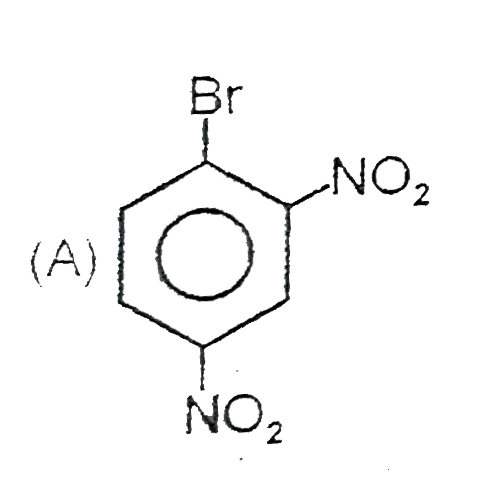 B
B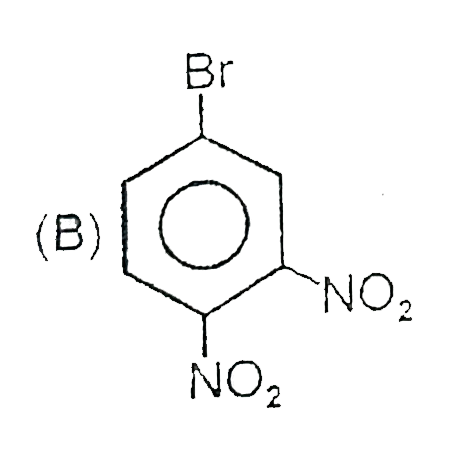 C
C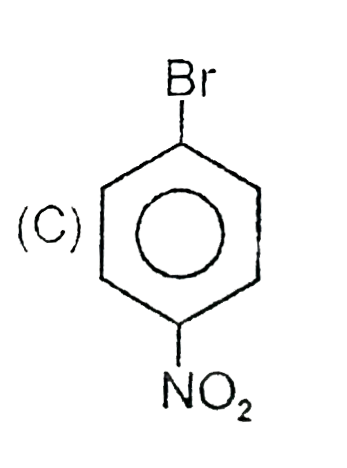 D
D
Which of most reactive towards nucleophilic aromatic substitution.
View SolutionWhich of the following is most reactive towards electrophillic aromatic substitution for halogen ?
View SolutionThe most reactive amine towards reactions with dil . HCl is
View Solution_2019_CBT5_E01_008_Q01.png)
The correct rate of reaction of given compounds towards electrophilic aromatic substitution reaction isView SolutionRank the following compounds in decreasing order of reactivity in electrophilic aromatic substitution reaction
 View Solution
View Solution


